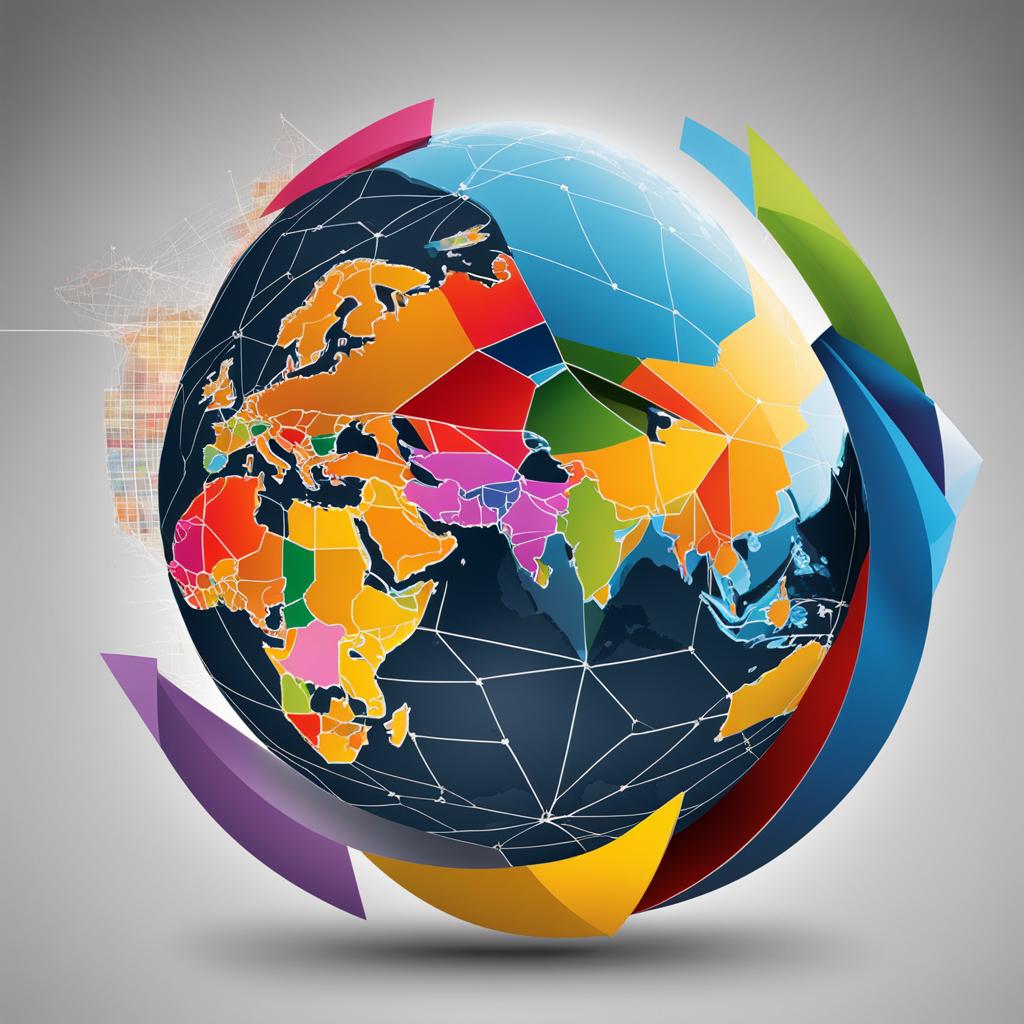At our core, we are always on the lookout for the latest trends and developments in the global economic landscape. In today’s fast-paced world, it is more important than ever to stay informed and ahead of the game.
That’s why in this section, we will be exploring the evolving landscape of global economic trends. We will dive into the latest market movements and provide insightful analysis to help you keep up with the ever-changing landscape of the global economy.
Join us as we discover the key drivers shaping global economic trends, take a closer look at regional economic trends around the world, and provide valuable insights that will help you navigate the constantly changing global economic landscape with confidence.
Key Drivers of Global Economic Trends
As we examine the evolving landscape of global economic trends, it’s essential to understand the key drivers that are shaping them. These drivers are responsible for the market movements that affect businesses and individuals worldwide. Let’s take a closer look at the most crucial drivers:
Technological Advancements
The digital revolution is in full swing, and it’s transforming the way we live and work. The rise of automation, artificial intelligence, and the Internet of Things (IoT) is streamlining processes and increasing efficiency across industries. Companies that embrace technology are better positioned to compete and thrive in the global economy. For instance, companies that use data analytics can make better decisions that improve their bottom line, while those that leverage e-commerce can reach customers across the globe.
Fun fact: did you know that global e-commerce sales are projected to reach $4.9 trillion by 2021?
Political Developments
Political developments can have a significant impact on the global economy. Changes in trade policies, tariffs, and regulations can disrupt supply chains, increase costs, and affect global demand. For example, the ongoing trade war between the US and China has caused uncertainty and instability in the global economy. To navigate the unpredictable political landscape, businesses need to stay informed and agile.
Environmental Sustainability
The world is waking up to the urgent need for environmental sustainability. As consumers demand eco-friendly products and services, companies are investing in sustainable practices that reduce their environmental footprint. For instance, companies are using renewable energy sources and implementing circular supply chain models. By prioritizing sustainability, companies can gain a competitive edge and appeal to socially conscious consumers.
Table: Industry-specific drivers of global economic trends
| Industry | Driver |
|---|---|
| Manufacturing | Globalization |
| Tourism | Changing travel patterns |
| Finance | Regulatory changes |
Regional Economic Trends Around the World
As we continue our exploration of global economic trends, it’s important to take a closer look at how different regions around the world are faring. Understanding the economic growth strategies, industry developments, and trade dynamics of various regions can provide valuable insights into the state of the global economy as a whole.
North America
North America has seen steady economic growth in recent years, with the United States being the main driver of this trend. The U.S. economy has been buoyed by a strong job market and tax reforms that have incentivized businesses to invest in the country.
Canada and Mexico have also experienced growth, though at a slower pace than the U.S. In Canada, the economy has been driven by a strong services sector, while Mexico has seen growth in manufacturing and exports.
Europe
Europe has been facing significant economic challenges, including Brexit, rising nationalism, and a slowing global economy. Despite these challenges, some countries, such as Germany, have managed to maintain steady growth due to a strong export industry and investments in technology and innovation. Other European countries, such as Italy and Greece, continue to struggle with high debt levels and low growth.
Asia Pacific
The Asia Pacific region has been a major driver of global economic growth in recent years. China, in particular, has experienced rapid economic growth, becoming the world’s second-largest economy. Japan, South Korea, and India have also seen growth, though at a slower pace than China.
The Asia Pacific region has been driven by a strong manufacturing industry and a growing middle class, which has led to increased consumer spending and investment. However, the region faces challenges such as trade tensions with the U.S. and a slowdown in global demand.
Middle East and Africa
The Middle East and Africa region has seen uneven economic growth, with countries such as Qatar, the United Arab Emirates, and Saudi Arabia experiencing steady growth due to their oil-rich economies. However, other countries in the region, such as Nigeria and South Africa, have struggled with political instability and economic challenges.
Latin America
Latin America has experienced mixed economic results in recent years. Brazil, the region’s largest economy, has struggled with political instability and a recession, though it has shown signs of recovery in recent years. Other countries in the region, such as Chile and Colombia, have experienced growth due to investments in technology, infrastructure, and exports.

As we can see from this overview, the global economic landscape is complex and continuously evolving. By keeping an eye on economic trends across different regions of the world, we can gain a better understanding of the factors that are shaping the global economy.
Conclusion
As we have explored, understanding global economic trends is crucial for businesses and individuals alike. By staying up to date with the latest developments and analyzing key drivers, we can make informed decisions and navigate potential challenges.
One key takeaway from our exploration is the increasing importance of environmental sustainability in shaping global economic trends. As consumers become more conscious of their impact on the planet, companies are under pressure to adopt sustainable practices and reduce their carbon footprint. This presents both challenges and opportunities for businesses, as they must find ways to remain competitive while also meeting these shifting consumer demands.
Another important trend to watch is the ongoing political developments around the world. From trade wars to geopolitical tensions, these factors can have significant impacts on the global economy. As such, it is important for businesses to stay informed and be prepared to adapt their strategies accordingly.
At the same time, we have seen pockets of economic growth and development in various regions around the world. From the growth of technology hubs in Asia to the rise of a new generation of entrepreneurs in Africa, there are many exciting developments to watch. By tapping into these emerging trends, businesses can position themselves for success and growth in the global economy.
In conclusion, keeping a close eye on global economic trends is essential for anyone looking to thrive in today’s interconnected world. By leveraging insights and staying informed, we can navigate the challenges and seize the opportunities presented by this ever-changing landscape.




